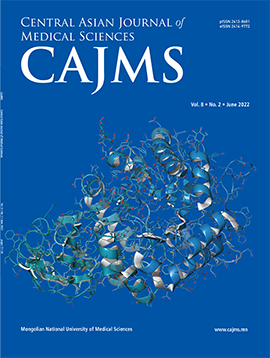Hepatitis C Associated B-Cell Non-Hodgkin Lymphoma: Impact of Combination Direct-Acting Antivirals and Chemotherapy
DOI:
https://doi.org/10.24079/cajms.2021.12.004Keywords:
B Cell Non-Hodgkin’s Lymphoma, Chemotherapy, Hepatitis C Virus, Hepatitis FlareAbstract
Objectives: Direct-acting antiviral agents (DAAs) have successfully eradicated chronic hepatitis C virus (HCV) infection. Since chronic HCV is known to have an increased risk of developing B cell non-Hodgkin lymphoma (B-NHL), successful HCV treatment may have virologic, hepatic, and oncologic benefits for B-NHL. Therefore, this study aimed to determine the efficacy of DAAs combined with chemotherapy in B-NHL patients with chronic HCV in Mongolia. Methods: This case-control study included newly diagnosed B-NHL patients with chronic HCV who received DAAs before chemotherapy (with DAAs group). The other is comprised of controls who have been treated by chemotherapy without DAAs. Patients who received courses of DAAs were monitored by the virological and hepatic responses. Results: Eleven patients received DAAs and none of them developed chemotherapy-associated hepatitis flare. Of the DAAs group, during DAAs treatment, 90.9% were clinically stable. In all cases of DAAs in combination with chemotherapy, the Sustained Viral Response (SVR)12 and 24 were 100%. However, 47.4% of those who received DAAs after chemotherapy developed hepatitis flare during chemotherapy. Patients with hepatitis flare had higher serum level of ALT before chemotherapy (15.7 U/L vs. 40.2 U/L; p = 0.014) than those without. Conclusion: DAAs administration results in a significant clinical benefit to B-NHL patients with chronic HCV.
Downloads
210
Downloads
Published
How to Cite
Issue
Section
License
Copyright (c) 2021 Mongolian National University of Medical Sciences

This work is licensed under a Creative Commons Attribution-NonCommercial 4.0 International License.




